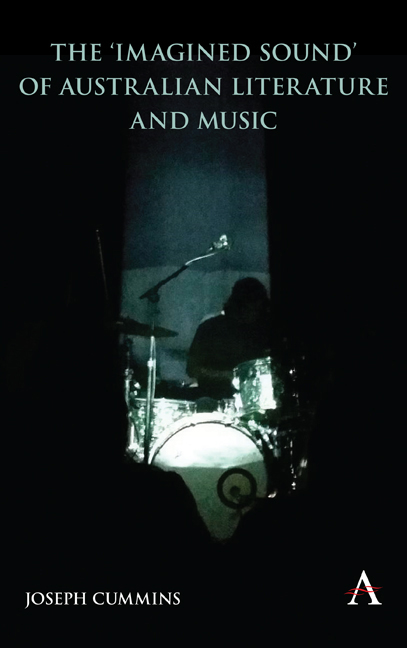Introduction: Imagined Sound
Published online by Cambridge University Press: 18 September 2019
Summary
While reading the classics of Australian fiction as a student I was also training in music. During that time – immersed in Alexis Wright's Carpentaria, Joseph Furphy's Such Is Life and Alex Miller's Journey to the Stone Country – one of the formative ensembles I played in was the Splinter Orchestra. Comprised of anywhere between three and upwards of 30 players, in Splinter there was an emphasis on being able to hear each other, and we frequently experimented with our instruments to produce unusual sounds. Splinter often performed in the open air, surrounded by the unique resonances of natural or man-made landscapes. One of my most memorable outside performances with the group was at Crater Cove, on Sydney Harbour; another took place in an abandoned air-raid bunker, on Cockatoo Island. During the three years I was a regular member of this unique ensemble, Splinter taught me, above all, to listen. Listening is one of the most vital features of life, integral to all forms of communication – face-to-face conversation, television, radio, sport, and of course, music. Listening captures an unrepeatable experience of a time, a place, a community. It connects us to the past and grounds us in the present. It needs to be practiced and is always open to improvement. It can be a challenge to the visual realm, an ethical imperative, a mode of resistance. It was in this context, exploring the worlds of both literature and music, that my practices of reading and listening converged into the approach that underpins this book.
Imagined Sound listens to the landscapes and histories of Australian post-World War II literature and music. In the seven chapters that follow, I will examine a range of novels, poems, songs, song suites, film clips and art music compositions using a method I term ‘imagined sound’. Through a return to various times in the past, these works – which encompass a diverse array of narratives – offer a remapping of Australian landscapes and histories. In Imagined Sound I trace the explorer's journey through the desert centre, imagined in Francis Webb poetic sequence ‘Eyre All Alone’ (1961), David Lumsdaine's electro-acoustic composition Aria for Edward John Eyre (1972) and Midnight Oil's rock music.
- Type
- Chapter
- Information
- Publisher: Anthem PressPrint publication year: 2019

